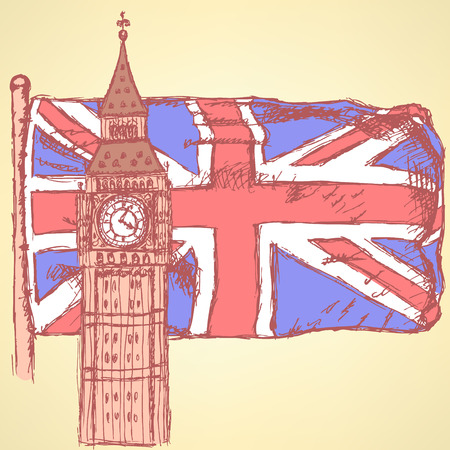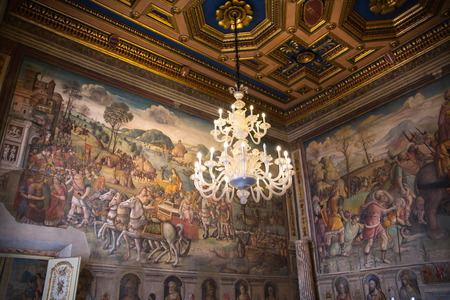1. Origins of Wallpaper in British Homes
Wallpaper has a rich and storied past within British interior design, tracing its roots back to the early 16th and 17th centuries. The first wallpapers to grace British homes were largely imported, often from France, Italy, and the Netherlands—countries already renowned for their decorative arts. These early papers were hand-painted or block-printed, showcasing intricate patterns that reflected both European artistry and the growing aspirations of the British middle classes. As Britain’s trade routes expanded and international influences became more accessible, wallpaper quickly evolved from a rare luxury into a fashionable statement for those keen on modern interiors. The adoption of wallpaper signalled more than just an aesthetic preference; it spoke volumes about social status, taste, and the newfound desire to express personality through home décor. As drawing rooms and parlours became the heart of domestic life, wallpaper offered an affordable way to imitate the elaborate tapestries and fabrics once reserved for aristocracy, making style and sophistication accessible to a broader public.
Wallpaper in the Georgian and Victorian Eras
The Georgian and Victorian eras marked a significant turning point in the history of wallpaper within British interior design. During the Georgian period (1714–1837), wallpaper became increasingly popular among the upper and middle classes, symbolising refinement and modernity. Early designs were often inspired by imported Chinese hand-painted papers, with motifs featuring florals, birds, and pastoral scenes. As British manufacturing advanced, local artisans began to interpret these influences, creating patterns that echoed neoclassical architecture and symmetry.
Advances in Printing Techniques
One of the most transformative developments during this time was the improvement of printing techniques. The introduction of block printing allowed for greater detail and colour variation. By the late 18th century, machine printing emerged, making wallpaper more accessible yet still a mark of taste. The table below highlights key innovations:
| Period | Technique | Impact |
|---|---|---|
| Georgian | Block Printing | Intricate patterns, limited colours, handcrafted luxury |
| Late Georgian to Early Victorian | Flock & Stencilled Papers | Tactile finishes, bolder textures, costlier production |
| Victorian | Machine Printing | Mass production, wider availability, affordable options |
The Rise of Ornate Patterns and Symbolism
The Victorian era (1837–1901) brought about a fascination with opulence and eclecticism in home décor. Wallpapers featured intricate damasks, elaborate florals, Gothic-inspired motifs, and jewel-toned palettes. These ornate designs reflected not only artistic trends but also technological progress. Wallpaper became a tool for Victorians to express individuality while asserting social status—elaborate parlours decorated with rich wallpapers were seen as markers of sophistication.
Status Symbol in British Households
In both eras, wallpaper served as much more than just decoration; it was a tangible indicator of wealth and taste. Affluent households would commission bespoke designs or import luxurious papers from France and China. Even as mass-produced options grew common, discerning homeowners selected patterns that aligned with their aspirations or heritage. This tradition of using wallpaper as a statement continues to influence British interiors today.

3. Arts & Crafts Movement and Wallpaper Design
During the late 19th century, the Arts & Crafts movement blossomed in Britain as a response to the mass-produced goods of the Industrial Revolution. This cultural shift championed the value of traditional craftsmanship, artistry, and natural forms, which had a profound effect on wallpaper design across British homes. Under this movement’s influence, wallpaper ceased to be merely decorative backdrops and became an expression of skilled handiwork and design philosophy.
One of the most celebrated figures of this era was William Morris. A designer, poet, and social activist, Morris believed that everyday surroundings should be both beautiful and meaningful. His wallpapers were meticulously hand-printed using natural dyes and featured intricate patterns inspired by British flora and fauna—think winding vines, blooming tulips, and curling acanthus leaves. These designs brought a sense of nature indoors and offered an antidote to the rigid uniformity of industrial production.
The Arts & Crafts movement also encouraged other British designers to experiment with colour, pattern, and technique. The emphasis was on quality materials and time-honoured methods, resulting in wallpapers that felt more like works of art than mere wall coverings. This period saw a revival in block-printing techniques and a preference for deep, earthy tones—shades that continue to evoke a sense of cosy authenticity in classic British interiors today.
As a result, the movement left an indelible mark on British interior design. The handcrafted appeal of Arts & Crafts wallpapers continues to resonate with those who appreciate heritage, artistry, and the tactile pleasures of well-made things—a sentiment that still finds its way into modern British homes.
4. Mid-20th Century Innovations and Styles
The aftermath of the Second World War brought not only a spirit of renewal to Britain but also a fresh perspective on home interiors. During the mid-20th century, wallpaper experienced a remarkable resurgence and transformation, mirroring the optimism and energy that defined post-war British society. With rationing fading into memory and homes in need of refurbishment, wallpaper became an accessible way for ordinary Britons to inject life and personality into their living spaces.
British Ingenuity: Materials and Manufacturing
One of the pivotal moments in this era was the introduction of new materials and manufacturing techniques. Innovations such as washable vinyl wallpaper made decorating more practical, especially for busy households. This leap in technology meant that even families with children or pets could enjoy stylish walls without constant worry about stains or damage.
| Innovation | Impact on British Homes |
|---|---|
| Vinyl Coating | Easy cleaning, longer-lasting patterns |
| Pre-pasted Wallpaper | Simplified DIY installation, increased popularity |
Playful Motifs and Pop Culture Influences
The spirit of the 1950s and 1960s saw British designers embracing boldness, playfulness, and experimentation. Motifs such as geometric shapes, abstract florals, and stylised nature scenes reflected both contemporary art movements and a sense of optimism. The “Swinging Sixties” particularly influenced wallpaper design, with pop art icons like Mary Quant and Terence Conran introducing striking prints that mirrored London’s vibrant culture.
Popular Mid-Century Motifs in British Wallpaper
- Atomic starbursts
- Psychedelic swirls
- Retro florals
- Mod stripes and checks
Cultural Impact and Everyday Life
The adoption of these new styles wasn’t just about aesthetics; it spoke to the changing aspirations of British families. A feature wall clad in vivid pattern became a proud centrepiece at tea time, while subtle prints offered calm after a bustling day out. This era cemented wallpaper’s role not just as decoration but as a reflection of personal taste—making every lounge or hallway uniquely ‘yours’.
5. Contemporary British Wallpaper Trends
Today, wallpaper in British homes is enjoying a vibrant renaissance, blending the best of tradition with a fresh, modern sensibility. Homeowners and designers across the UK are embracing new technologies and sustainable approaches, while still drawing inspiration from classic motifs that echo the nation’s rich design heritage.
Eco-Friendly Materials
One of the most notable trends in contemporary British wallpaper is the shift towards eco-friendly materials. With sustainability at the forefront of interior design conversations, many UK brands are now producing wallpapers using recycled fibres, water-based inks, and biodegradable substrates. These earth-conscious options cater to a growing awareness of environmental impact without compromising on style or durability. It’s now common to see wallpapers that proudly boast their low VOC content and responsibly sourced papers, allowing homeowners to beautify their spaces with a clear conscience.
Digital Prints and Customisation
The rise of digital printing has revolutionised wallpaper design across Britain. This technology enables intricate patterns, photo-realistic murals, and personalised prints that would have been unimaginable just a decade ago. From whimsical botanicals to abstract art, digital techniques allow for richer colour palettes and sharper details, making statement walls more accessible than ever before. Many boutique British studios even offer bespoke services, letting customers create unique designs tailored precisely to their tastes and spaces—a nod to the British love of individuality and personal expression.
Blending Traditional with Modern Aesthetics
Perhaps most distinctively British is the seamless fusion of old and new in current wallpaper trends. Iconic motifs like William Morris florals or Regency stripes are being reimagined with contemporary twists—think bolder scales, unexpected colour pairings, or overlaying traditional patterns with metallic finishes. This blend speaks to Britain’s ability to honour its storied past while confidently moving forward; it’s not unusual to spot a Victorian-inspired damask pattern rendered in punchy neon hues within a modern London flat. Such juxtapositions add layers of character and narrative to interiors, creating spaces that feel both grounded and dynamic.
A Reflection of Modern British Life
Ultimately, today’s wallpaper choices reflect the evolving lifestyles and values of people living in the UK. From eco-conscious families in leafy suburbs to creative professionals in urban flats, there’s an ever-expanding array of options that invite personal storytelling through design. The current trends encapsulate not just aesthetic preferences but also wider cultural shifts—towards sustainability, individuality, and an appreciation for both heritage and innovation within the home.
6. Wallpaper’s Role in British Home Identity
Wallpaper has become more than just a decorative feature in British homes—it’s woven into the very fabric of what makes a house feel uniquely “British.” For generations, wallpaper has provided a backdrop to family life, from the stately patterns of Victorian parlours to the playful motifs in children’s bedrooms. Its presence on the walls speaks to both heritage and individuality, subtly reflecting the personalities and stories of those who live within.
In today’s Britain, wallpaper continues to bridge the gap between past and present. Modern designs might incorporate bold geometrics or contemporary florals, but there’s always a respectful nod to tradition—think William Morris-inspired prints or retro 1970s palettes making a comeback. This blend of old and new allows homeowners to express their own style while still honouring the rich tapestry of British design history.
What sets wallpaper apart is its ability to create atmosphere and character with minimal fuss—a quick change can completely refresh a space, making it feel orderly, intentional, and lived-in. It helps define zones in open-plan living, adds warmth to rented flats where painting isn’t an option, and even serves as a talking point at gatherings. In essence, wallpaper is as much about practicality as it is about beauty.
As British homes continue to evolve—with smaller spaces, multi-purpose rooms, and an emphasis on sustainability—wallpaper adapts too. Peel-and-stick varieties offer flexibility for renters; eco-friendly papers cater to greener lifestyles. Despite changing trends, the comforting familiarity of wallpaper endures, offering everyone—from city dwellers in compact flats to families in country cottages—a simple way to claim their corner of Britain with pride and personality.


